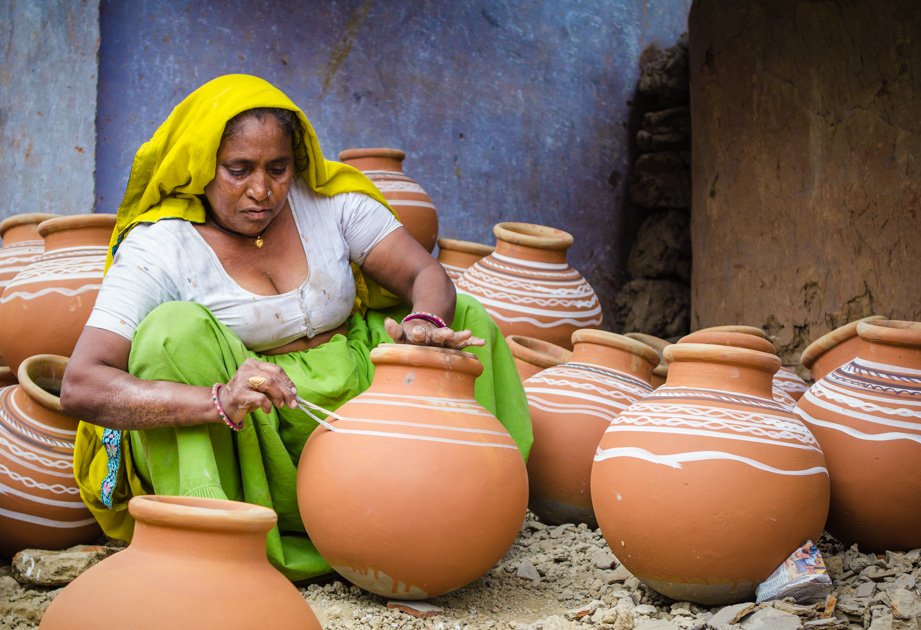It took us two attempts and many hours to find the pottery colonies. Kumhargram and Prajapati are two rustic and non-commercial villages in the outskirts of west Delhi.
Although these colonies are the largest settlements of potters in the Indian capital, with over 700 Rajasthani families who migrated to Delhi hoping to have better opportunities and quality of life, they are practically unknown and very difficult to find, even for the locals who live near by.
Just like my other photography trips, it was a delight to see all these people working and their way of living. Unlike other areas in Delhi and Gurgaon, where people tend to be more serious, the villagers here were quite friendly, smiley and welcoming, happy to invite us for tea in their homes and to proudly show how they work.
It was fascinating to be in such a calm environment away from the chaotic and noisy city life.
I hope you get to see, enjoy and learn through my pictures what I lived in those colonies. It was as usual, a great Indian experience!
THE PROCESS
The process of making any object with clay is very interesting and in one way or another every member of the family is involved. These families never had a formal training but had passed their knowledge from generation to generation.
The clay for making the pots and sculptures is brought mostly from Haryana, Rajasthan and Uttar Pradesh. Usually the women are the ones who first break and soften the earth as much as possible with a wooden stick and then sieve it to get it finer and turn it into clay. The remaining stones are thrown away.
They soak and knead the mud into a fine paste.
I was so absorbed taking photos that my foot went all the way though a hole full of mud ready to be used.
When the mud is ready, the women start molding it by hand. Men mold with their hands and also use the potter´s wheel.

Once the pots, plates and vases take the desirable shape, they are left to dry.
When everything is dried and hard then the items are decorated and then baked in a kiln or oven for about 7 hours.

The majority of the pottery items are packed and delivered to wholesalers. They are sold in very popular markets or bazaars for tourists at high prices. Unfortunately, the potters earn only a very small amount.
Despite their little profits, they know how to be happy and enjoy life. These artisans do not waist anything, they fix and recycle and build their houses with broken pots.
Simple and humble people and yet so much to learn from them!































































Nice work
[…] Image courtesy Isabel Posadas […]